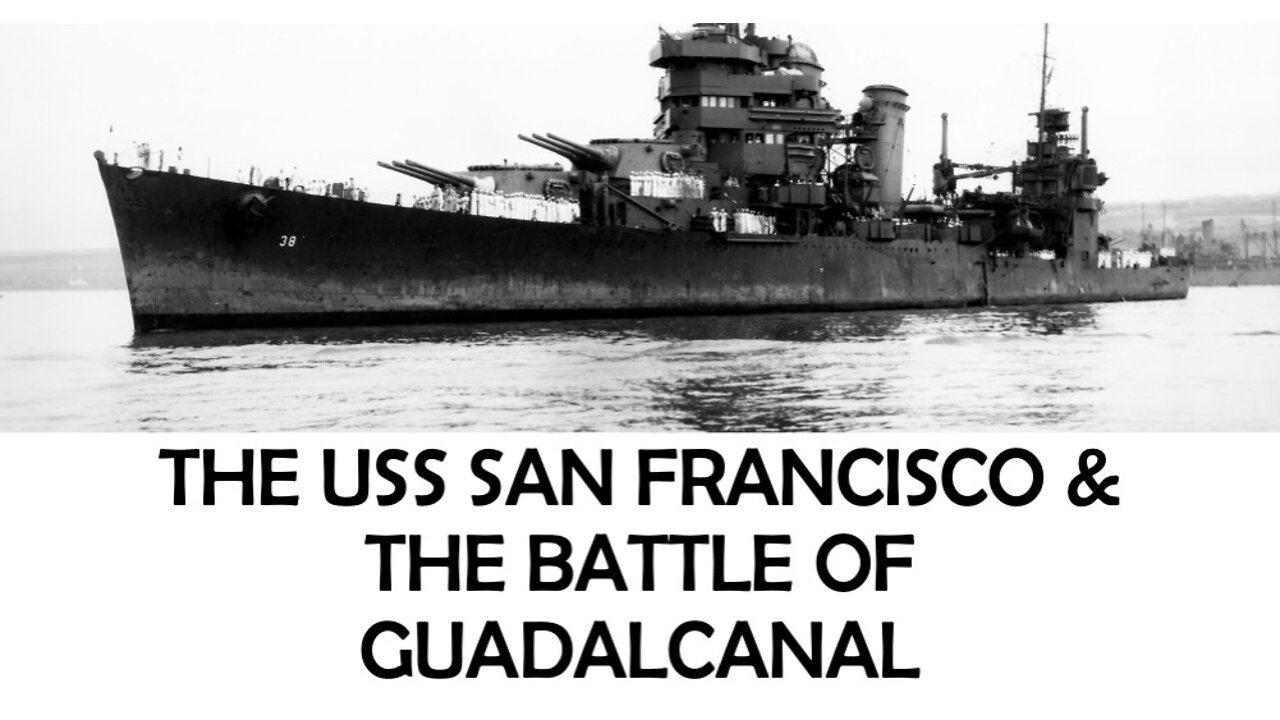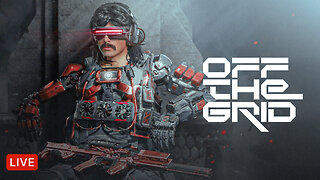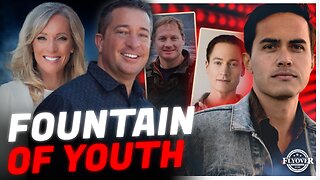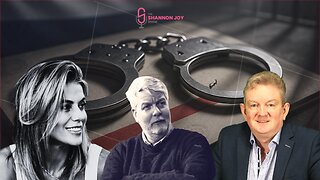Premium Only Content

The USS San Francisco & the Battle of Guadalcanal; USS San Francisco Memorial, Land’s End, SF, GGNRA
The USS San Francisco played an important role in the Battle of Guadalcanal. At the USS San Francisco Memorial (located on Land's End Park within the Golden Gate National Recreation Area in San Francisco, California), a sign post records the story of brave men who died, fighting for their country and the cause of freedom.
The story is as follows:
"The Naval Battle of Guadalcanal: Friday, November 13, 1942. By July 1942, Japan's military juggernaut had invaded and occupied Korea, Manchuria, China, Hong Kong, Burma, Vietnam, Cambodia, Laos, Malaysia, Indonesia, Singapore, Borneo, New Guinea, Rabaul, Turk, the Philippines, Aleutians, Marshalls, Carolines, and the Solomons, which includes Tulagi, Savo, and Guadalcanal Island: 'A steamy, tropical, malaria infested jungle.'
The Japanese worked feverishly to build airfields on several islands. The airfield on Guadalcanal was their last and most important. It was strategically located since the Japanese Air-Corps could then 'hop' from Japan to Iwo Jima, Guam, Rabaul, Truk, Bougainville, and then Guadalcanal. Their next planned invasion was Australia.
U.S. Marines landed on Guadalcanal August 7, 1942. They captured and secured the airfield, naming it 'Henderson Field.' True to their tradition and dedication, the Marines fought for months against thousands of Japanese soldiers attempting to regain control of the airfield. Dramatic aerial 'dog fights' were fought daily in the skies above.
Japan's Vice Admiral Hiroaki Abe was dispatched to bombard and land troops on Guadalcanal. His strike force consisted of two 32,000 ton battleships--the Hiei and the Kirishima. Together they could fire off 23,840 pounds of bombardment salvos every three minutes--spewing deadly carnage--continuously for three hours. Also under his command were one cruiser, 14 destroyers, and 11 transports carrying 14,000 troops.
Rear Admiral Daniel J. Callaghan, on board his flagship the USS San Francisco (CA-38), a 10,000 ton treaty cruiser, was directed to intercept the Japanese naval strike force. His command consisted of 5 cruisers and 8 destroyers.
On November 12, near Guadalcanal, a damaged enemy plane crashed into the USS San Francisco, destroying the aft control station, killing and wounding 51 men. With a crippled flagship, RADM Callaghan bravely prepared his task force for this imminent battle. Overheard on the bridge was the comment, 'But this is suicide.' Rear Admiral Callaghan--cool, calm, and resolute, replied--'Yes, I know, but we've got to do it!'
This ferocious battle commenced at 1:48 a.m. Friday the 13 of November 1942. It was a sudden clash between 27 steel armored warships--14 Japanese and 13 American. The U.S. Naval ships had penetrated into the center of the Japanese battleship formation, a major advantage for RADM Callaghan.
Massive guns exploded in the pitch black night, firing hot projectiles with smoke and fire. Suddenly, the Japanese snapped on their bright searchlights. This gave the admiral an additional advantage by identifying the enemy ships. He then issued the order 'Get the big ones first!' Hundreds of salvos rained down on the enemy battleships with blistering devastation. Blazing ships became targets.
Hundreds of men on both sides escaping from their sinking ships swam for their lives in the black night sea. Men were killed by the spinning propellers of ships twisting and turning to avoid collision. Man more were killed by circling sharks.
Never in the history of modern warfare had U.S. Naval Forces clashed with enemy ships at collision range in a pitch-black night. This is the only U. S. Naval surface ship engagement in which an American admiral was killed in action, let alone two: RADM Daniel J. Callaghan on the USS San Francisco (CA-38) and RADM Norman Scott on the USS Atlanta (CL-51).
A total of more than 6,000 men on both sides were killed or wounded. 2 U.S. cruisers, 4 U.S. destroyers, and 2 Japanese destroyers were sunk. At dawn, the battleship Hiei, aflame, floundering, and dead in the water--a derelict--was abandoned and sank later that day. During the next few days, other Japanese ships were chased down and sunk, including the battleship Kirishima.
The USS San Francisco, severely damaged and crippled, limped home at Christmas-time to receive a new bridge and other major repairs at the Mare Island Naval Shipyard. She then returned to sea to give battle and bombardment support for landings and occupations in the Pacific. These included the Aleutians, Wake, Kwajalein, Bougainville, Tarawa, Yap, Palau, Ulithi, Rabaul, Truk, Guam, Saipan, Tinian, Luzon, and the Battle of the Philippine Sea. Then, on to Iwo Jima, and finally Okinawa, where the USS San Francisco (CA-38) earned her 17th battle star.
This battle of November 13, 1942, was a major turning point of World War II. It prevented the possible loss of Henderson Field, thus saving Australia from the planned invasion. It marked the beginning of victory in the Pacific.”
-
 LIVE
LIVE
Tim Pool
2 hours agoEpstein Scandal WON'T GO AWAY, Does Epstein MATTER To MAGA? | The Culture War
19,642 watching -
 LIVE
LIVE
Dr Disrespect
1 hour ago🔴LIVE - DR DISRESPECT - NEW AAA BATTLE ROYALE ON UNREAL ENGINE 5 #OTG #OFFTHEGRID
1,622 watching -
 LIVE
LIVE
Nikko Ortiz
1 hour agoLive - News, Politics, Podcast And Naaah Im Playin We Chillen
506 watching -
 LIVE
LIVE
Donut Operator
1 hour agoCRIME/ CYCLISTS ARE SCUM/ GAMEBOY CAMERA CHAD
636 watching -
 LIVE
LIVE
The Charlie Kirk Show
59 minutes agoThe WSJ Nothingburger + No Amnesty Means NO AMNESTY + The Jobs AI Won't Do | Rowe | 7.18.25
3,781 watching -
 UPCOMING
UPCOMING
The Big Mig™
48 minutes agoGlobal Finance Forum From Bullion To Borders We Cover It All
177 -
 UPCOMING
UPCOMING
Rebel News
22 minutes agoFord urges Poilievre to be liberal, Canada’s crime spikes, Quebec church burns | Rebel Roundtable
-
 LIVE
LIVE
The Mel K Show
1 hour agoMORNINGS WITH MEL K -Our Kids Are Not Alright-The People Must Push Back Now! 7-18-25
948 watching -
 LIVE
LIVE
Flyover Conservatives
12 hours agoThe Fountain of Youth? Red Light Therapy for Longer Life - Jonathan Otto | FOC Show
350 watching -
 LIVE
LIVE
The Shannon Joy Show
19 hours ago🔥🔥URGENT! Dutch Medical Freedom Attorney Arno van Kessle Arrested And Held Without Charge - Live EXCLUSIVE With Jim Ferguson!🔥🔥
185 watching